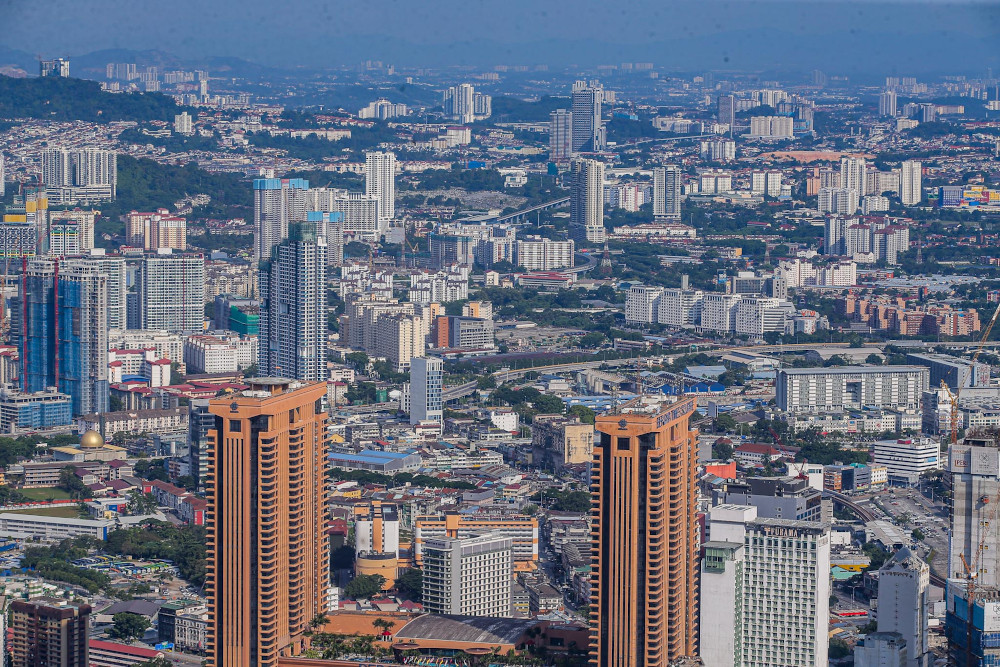KUALA LUMPUR, July 10 — Malaysia revised the national poverty line income from RM980 to RM2,208, which means that over 400,000 households in the country with monthly incomes below this level were considered poor in 2019, the Department of Statistics Malaysia (DOSM) revealed today.
Based on the new poverty line income, DOSM said Malaysia’s poverty levels have fallen in 2019, when compared to the last available figures in 2016.
In announcing the new national poverty line income (PLI), Malaysia’s chief statistician Datuk Seri Mohd Uzir Mahidin explained that the new figure was obtained based on changes in methodology that now emphasised healthy eating and quality basic needs.
He said the DOSM worked with various stakeholders including the Health Ministry to revise the national PLI, following the 11th Malaysia Plan’s launch where it was stated that there was a need for Malaysia to review its poverty level indicator.
The previous 2005 methodology, which determined the national PLI of RM980, was based on the minimum food requirements of each household member and 106 non-food items based on the spending patterns of the country’s bottom 20 per cent group (B20) in the 2004/2005 household expenditure survey.
In contrast, the new 2019 methodology which determined the national PLI of RM2,208 was based on optimum food requirements and healthy eating, as well as 146 non-food items from the B20 households’ spending pattern in the 2019 household expenditure survey.
“From the aspect of food items… before this we looked more towards the concept of ‘minimum’, but this time we stress on the discussion with the Health Ministry — optimum and healthy and quality, and it is based on the 2017 Recommended Nutrient Intake and the Malaysian Dietary Guidelines,” he explained at a press conference today.
Under the new methodology, calculations for the food component of the PLI are now based on servings according to food categories that are converted to price, instead of the previous methodology based on the individual’s calories requirements.
The recommended food servings include fish, poultry, meat, cereal, bread, rice, eggs, vegetables and milk.
As for non-food items, those covered are clothing and shoes; housing, fuel and utilities; furniture; transport and communications; education and health.
What the new PLI means for Malaysia
Based on the new 2019 methodology, the national mean poverty line income for households in Malaysia in 2019 is RM2,208 per month (with RM1,169 for food and RM1,038 for non-food items).
(The RM2,208 figure was obtained by dividing the overall PLI value in each household with the total number of households in Malaysia, DOSM said.)
Also based on the new 2019 methodology, the national mean PLI in 2016 is RM2,141.
By using the new methodology, Malaysia’s absolute poverty rate would be recorded as improving from 7.61 per cent in 2016 to 5.6 per cent in 2019. This would translate into a decrease in households considered poor, namely a drop from 525,743 households falling below the poverty line in 2016 to 405,441 households in 2019.
Size matters when it comes to poverty, with 70.4 per cent of the 405,441 poor households having more than four household members, while 13.3 per cent of these households had four household members, DOSM’s data showed.
Age was also looked at, with the highest percentage of poor households recorded among households with the head of the family aged 45 to 49 (16.3 per cent), followed by those aged 40 to 44 (15.4 per cent) and 50 to 54 (13.1 per cent), with DOSM also noting that those with household heads aged 65 and above recording incidence of poverty at 12 per cent in 2019.
When it comes to absolute poverty levels in the different states in 2019, the highest levels were recorded in Sabah (19.5 per cent), Kelantan (12.4 per cent), Sarawak (9 per cent), Kedah (8.8 per cent), Perak (7.3 per cent), and Terengganu (6.1 per cent). The other states were below the national absolute poverty level of 5.6 per cent, namely Negri Sembilan and Pahang (4.3 per cent), Melaka, Perlis and Johor (3.9 per cent), Labuan (3.1 per cent), Penang (1.9 per cent), Selangor (1.2 per cent), Putrajaya (0.4 per cent), and Kuala Lumpur (0.2 per cent).
The new methodology would also translate to a decrease in absolute poverty in Malaysia’s urban and rural areas to 3.8 per cent and 12.4 per cent in 2019, down from 4.8 per cent and 17.5 per cent in 2016 when the new methodology was used on 2016 figures, DOSM said.
As for hardcore poverty, it would also improve from 0.62 per cent in 2016 to 0.4 per cent in 2019, based on the new methodology. This would translate into a decrease in the number of hardcore poor households, from 45,004 households in 2016 to 27,158 households in 2019.
What if the old methodology was used?
In contrast, the DOSM showed that using the 2005 methodology — which had only minimum food requirements instead of optimum and healthy food requirements — would result in a national PLI of RM983 in 2019 and RM980 in 2016. (The food component of the PLI would have come up to more than RM600, while the non-food component would have come up to more than RM300.)
The old methodology would have resulted in Malaysia’s absolute poverty rate being recorded at 0.4 per cent in 2016 and 0.2 per cent in 2019, or just 24,673 households in 2016 and just 16,653 households in 2019 being officially considered poor.
The old 2005 methodology would also have translated into zero levels of hardcore poverty being recorded in 2016, and just 0.02 per cent or 1,752 households considered as being hardcore poor in 2019.



















